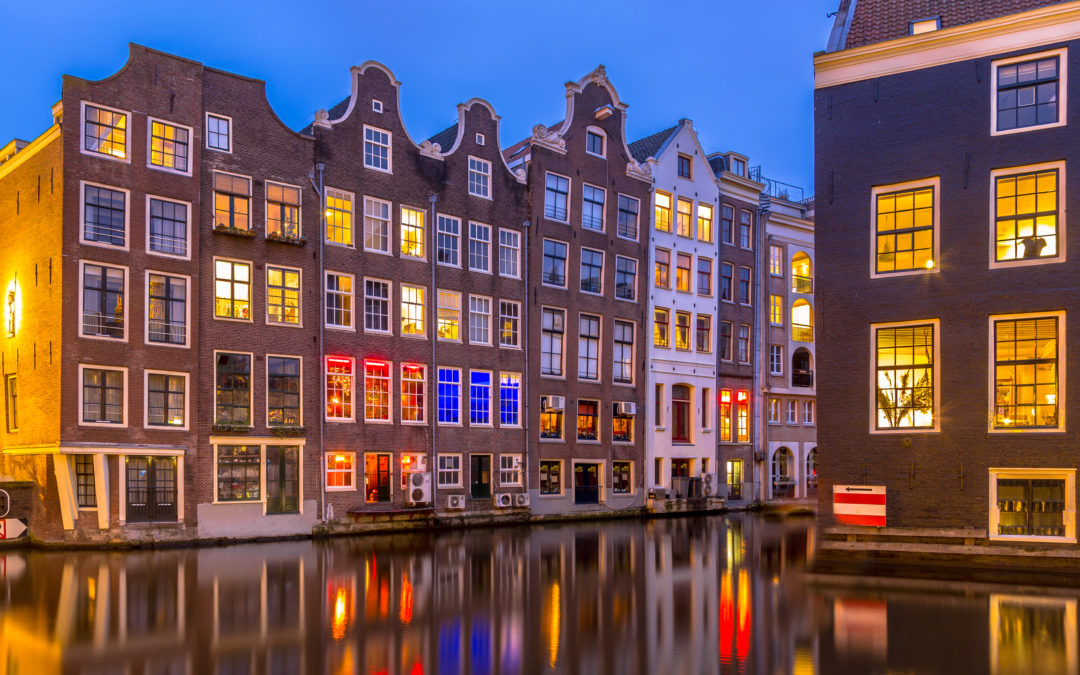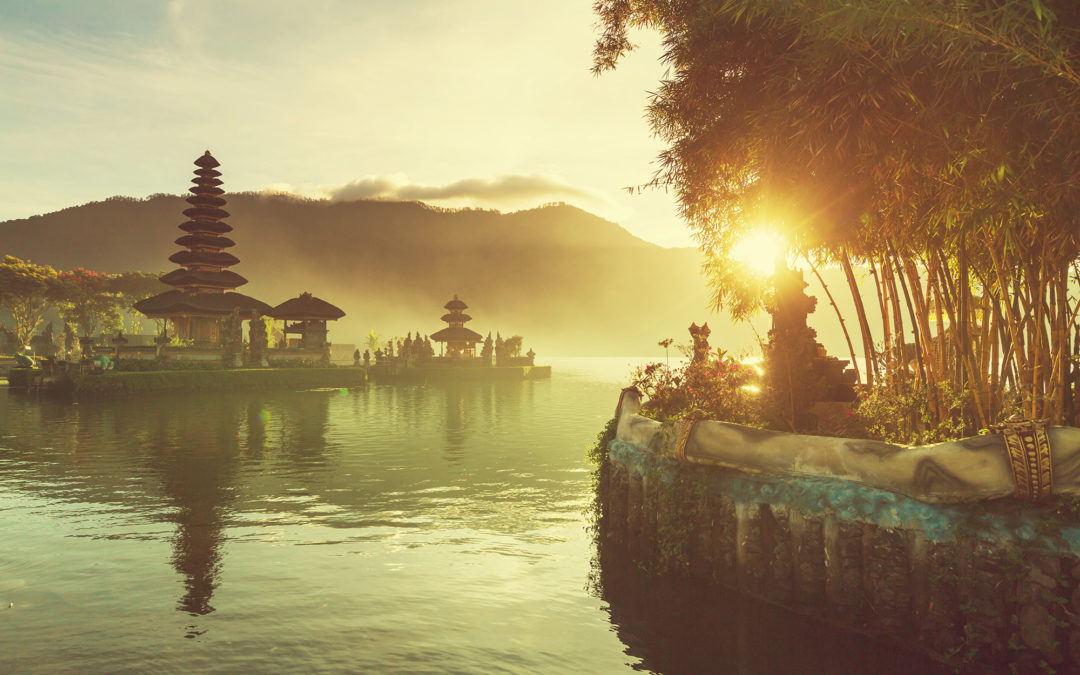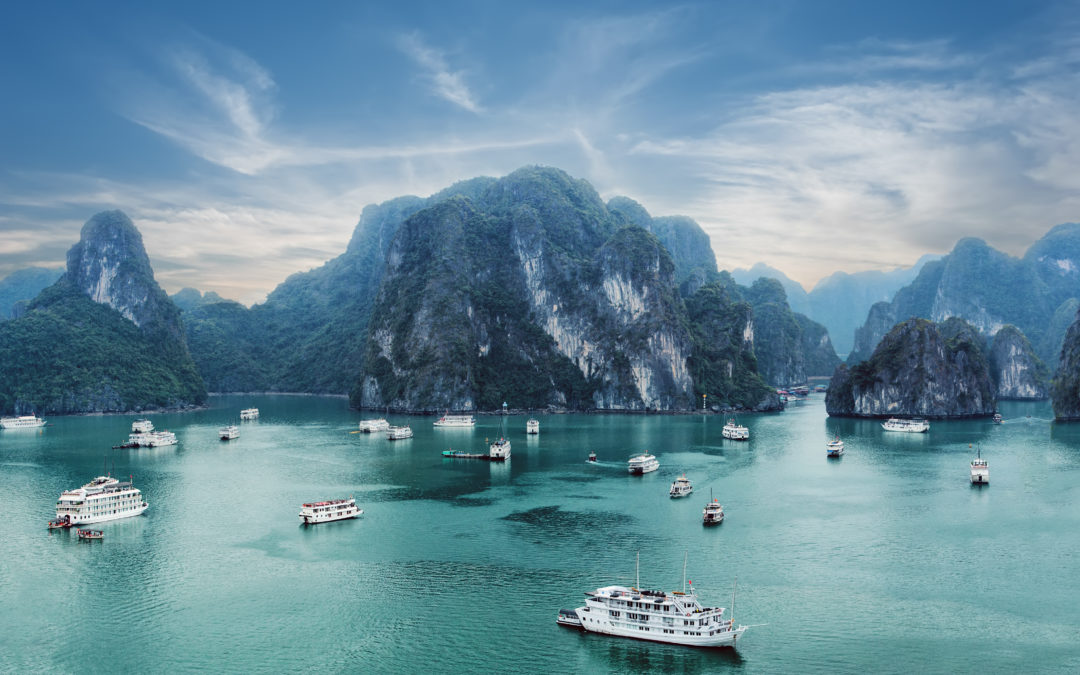


12 trips for the 12 months of 2019
Choosing the perfect time to travel is an important part of planning your dream holiday. Nobody wants to be on a beach break during hurricane season, or find your favourite museum is closed during your visit!
Instead, choosing the ideal time to visit means seeing a place at its absolute best, and doing everything you want to. Luckily, at any time, there are great destinations just waiting to be added to your travel list. Here is our guide for where to travel, when, so you can have an amazing vacation.
January: Mexico
Start your new year off right with a sojourn to sunny Mexico, while the weather is not too hot and not too cold — just perfect for relaxing by the beach and exploring Mayan ruins.
While much of the northern hemisphere shivers through the middle of winter, Mexico in January enjoys warm and dry conditions that are just perfect for a beach break. Coastal cities like Cancun experience their “coldest” temperatures in January, but you can still expect to enjoy average temperatures in the mid-20s celsius (70s F).
The milder temperatures are also ideal for exploring the historic sites around Mexico, as well as swimming in the natural pools. It’s peak time for tourism, so you can also expect the restaurants, beach bars and resorts to be bustling.
Where to Stay:
February: Rio de Janeiro
If there’s one place to be in February, it’s surely Rio de Janeiro. Although it’s still frosty in much of North America and Europe, February in Rio is hot, hot, hot!
Not only is the weather in February delightfully warm (with an average of around 27°C (81°F) during the day), but the city also hosts perhaps the world’s most famous party – Carnival – in February. Although Rio de Janeiro is always a lively place, it truly comes alive with the sound of salsa beats and the sound of locals sashaying in their colourful outfits.
When not enjoying the party atmosphere of Carnival, you can’t miss relaxing on Rio’s famous Copacabana beach or taking a hike up Sugarloaf Mountain to take in the great views of the city.
Where to Stay:
March: Thailand
Continuing the warm theme, March is the perfect time to enjoy the beautiful landscapes of sunny Thailand. All of the country the conditions are perfect for travelling, but the islands such as Koh Samui and Phuket are particularly delightful.
Although Thailand enjoys warm, tropical weather all-year round, March is a particularly ideal time to visit as the weather is cool and dry. Even though it’s cool season, you can still expect the mercury to reach an average of around 30°C (86°F), which is just ideal for making the most of the stunning beaches and excellent snorkelling.
The weather is also dry with about nine hours of daily sunshine, meaning there is ample time to enjoy Thailand’s many adventure activities like hiking and kayaking, or to explore historic sites.
Where to Stay:
April: Bali
Bali is another location that’s lucky enough to boast pleasant weather all-year round, but a trip to the island in April is a particular treat thanks to the moderate and dry weather.
April in Bali sees temperatures climbing to near their warmest for the year, while there is little to no rain. Most days linger around 27°C (81°F), making them ideal for lazing by the pool or beach, but still pleasant for exploring Bali’s stunning temples without too much heat or humidity.
Plus, April is just before high season, so you can expect to have a little more space and for prices to be a little more affordable. The only exception is during the Easter long weekend, which is one of the busiest times for travel to Bali.
Where to Stay:
May: Miami
Miami is synonymous with sunshine, so the best time to visit is when the sun is high in the sky and temperatures are perfect for wearing your swimwear to the beach. May definitely fits the bill!
Temperatures in May are delightful, hovering around 26°C (79°F) most days with a bit of humidity. Luckily, the beach is the perfect escape from the humid temperatures, so head down to South Beach or perhaps quieter 77th Street Beach for a relaxing day.
Plus, the warmer temperatures mean pleasant, light evenings which are ideal for exploring Little Havana. Although most of May avoids peak season (think fewer crowds and more affordability), late-May does see Spring Break arrive in Miami — something you may want to factor into your travel planning.
Where to Stay:
June: Sardinia
There’s nothing like a stunning sunny island retreat for a mid-year pick-me-up, so why not head for beautiful Sardinia, Italy during the month of June?
It’s the ideal time to visit the island, as temperatures are beautifully warm with average highs of 26°C (79°), while there’s little chance of rainfall disrupting your plans. Add in nine hours of daily sunshine to give you plenty of time to make the most of your holiday, and you’ve got yourself a wonderful June destination!
Plus, June just heads off the peak season in July and August, so you can expect to have a little more room to spread out your beach towel or wander the cobblestone streets in towns like Cagliari. Late June also sees the festival of St. John the Baptist (celebrating the summer solstice) in Alghero.
Where to Stay:
July: Madrid
July is a popular month for travel in Europe and North America, thanks to the warm temperatures and school holidays, meaning many destinations are busy. We say embrace it and pay a visit to Madrid, Spain’s fastpaced and bustling capital.
The second warmest month of the year, July sees Madrid temperatures hover around a high of 33°C while rain is almost non-existent. Instead, you’ll have more than thirteen hours per day of sunshine to enjoy the city’s many attractions, such as hiring a paddle boat in the midst of El Retiro Park.
Plus, evening temperatures stay around 22°C (72°F), meaning that there’s no better time to enjoy Madrid’s legendary tapas bars and salsa dance clubs than July when the pleasant evenings mean venues are bustling with friendly Spaniards.
Where to Stay:
August: London
While other countries’ capitals such as in Spain and France largely shut down for summer holidays, England goes in the opposite direction, making August one of the best times to visit the country’s capital.
It’s not a visit to London without catching some royal fever and visiting icons such as Buckingham Palace. In August, you’ll find that the Palace (as well as other royal residences) are open for tours, giving you a chance to step into the footsteps of the Royal Family. Of course, other attractions such as Big Ben and the British Museum are also open for visitors.
August also sees the warmest weather in London (still a moderate 23°C or 74°F), and the city knows how to make the most of the sunshine. Keep your eye out for frequent open-air concerts and other events that make the most of the warmth.
Where to Stay:
September: New York
The Big Apple is the perfect destination to visit in September, so get ready to be wowed by the city that never sleeps — New York!
In September, New York is still enjoying beautifully warm temperatures with maximums around 23°C (74°F), making it the ideal time to stroll through Central Park or perhaps sip a cocktail in a chic rooftop bar. Plus, most kids go back to school in September, which means that the crowds have thinned and the lines for the city’s top attractions are less overwhelming.
In late September, you might catch the leaves beginning to turn orange and fall — a particularly magical time for a walk through Central Park.
Where to Stay:
October: Seattle
Catch the last of the sunshine in unique and ever-stylish Seattle in October, and perhaps even catch one of the month’s excellent festivals.
Temperatures can be chilly (averaging highs of around 16°C or 60°F), but there’s still plenty to do and see. Seattle is synonymous with music, and music fans can catch the Earshot Jazz Festival. October also brings stunning fall colours to the national parks, and they are nowhere near as crowded as they are in the warmer months. Just note that some of Mount Rainier’s trails close in late October.
Another reason to put Seattle on your October travel list is that it’s a great time to catch migrating whales — Humpback Whales in particular are often sighted near Seattle in October.
Where to Stay:
November: China
Although it sees temperatures beginning to drop in many parts of the world, November is the ideal place to visit enchanting China.
The weather in China can be quite cool, with the possibility of spotting snow in the south. Overall, however, the weather is mild and ideal for exploring China’s many sites, from walking the Great Wall to hiking in the spectacular JiuZhai Valley National Park, as long as you’re appropriately dressed. Plus, the autumnal colours make the national parks especially beautiful.
While China’s cities are always bustling, November also just avoids China’s peak tourist season, so you can expect a little more room to breathe and more affordable prices.
Where to Stay:
December: Paris
The temperatures might be chilly, but December is an ideal place to soak in the festive magic in the City of Love, beautiful Paris.
You might need to pack a chic jacket, however December brings plenty of festive cheer to the city, meaning it is one of the most magical times to visit. Christmas decorations adorn the beautiful cobblestone streets, and charming Christmas markets pop up on seemingly every square. Plus, is there a better way to bring in the New Year than watching the lights shimmer on the Eiffel Tower?
Also, as one of the most visited cities on earth, Paris can be overwhelming during the peak summer season — so skip over it in favour of a visit while it’s an enchanting winter wonderland.
Where to Stay:

The Top 10 Natural Wonders to Experience In Your Lifetime
It’s an amazing world out there, with jaw-dropping natural wonders on every continent, from powerful waterfalls to expansive deserts. It’s not an easy task, but we’ve narrowed down our top ten natural wonders you should experience in your lifetime!
#1 Ngorongoro Crater, Tanzania, Africa
Over time, however, life flourished in the crater, and today it has incredible biodiversity, all in a relatively small area. While in other safari destinations you have to drive for long distances to find the spot, here thousands of animals live within close proximity. This also means that you are much more likely to see the “circle of life” in action.
Where to Stay:
There are a few luxurious options within the crater itself, or else base yourself in Oldeani nearby.
#2 Uluru, Australia, Australia
You can drive for hours in the centre of Australia and see nothing except swathes of red sand in every direction, as far as the eye can see. Perhaps the odd bush or gnarled tree if you’re lucky — that is, until the enormous orange Uluru rock rises seemingly out of nowhere.
Thought to have formed some 550 million years ago, Uluru’s size is incredible – it is 348 metres tall, and has a circumference of 9.4 kilometres. Then there’s the way its colours shift in the changing light, and particularly at sunrise and sunset. It’s no wonder the indigenous Anangu people have so many myths and legends about it.
Where to Stay:
It’s best to stay within the Uluṟu-Kata
#3: Iguazu (Iguaçu) Falls, Argentina/Brazil, South America
Said to make the United States’ Niagara Falls look like a trickle, the impressive Iguazu Falls border Argentina and Brazil. Both countries argue that their side is better, but in reality, the falls are jawdroopingly spectacular from any vantage point.
Spanning over 2.7 kilometres with more than 275 individual waterfalls, Iguazu really is a sight to behold. The tallest waterfall, the Devil’s Throat, is more than 80 metres tall. All in all, the falls dump up to five swimming pools’ worth of water every second. Pretty incredible, right?
Where to Stay:
There are great accommodation options within the national park on both the Argentinian and Brazilian sides, including several places with jaw-dropping views.
#4: The Grand Canyon, USA, North America
We don’t know exactly how old it is (scientists believe it’s somewhere between 5 and 6 million years old), but we do know that it is one of the most impressive landscapes on earth.
Over time, the Colorado River carved out a trail some 446 kilometres (277 miles) long, creating a stunning canyon that snakes through the barren landscape. It’s no wonder it’s such a popular destination with hikers, photographers and outdoor enthusiasts who flock to take advantage of the amazing views.
Where to Stay:
A luxe lodge within the Grand Canyon National Park is the perfect place to retire after a day of hiking the north or south rim.
#5: The Dead Sea, Jordan, Middle East
Sometimes natural wonders inspire and amaze us, and sometimes they make us laugh – the Dead Sea in Jordan does both! Here, due to the extremely high salt content in the water, you float right to the top of the ocean.
Yes, instead of sinking in the water, you bob right to the top like an apple on Halloween. It’s an amazing, unique sensation that feels downright bizarre at first. Plus, don’t forget to liberally apply Dead Sea Mud on your face and body before you start floating — experts say it’s brilliant for your skin.
Where to Stay:
There are a host of fabulous sea-front resorts near Swemeh in Jordan.
#6: Trolltunga, Norway, Europe
In truth, most of Norway’s fjords – valleys carved out by glaciers over millions of years – would fit comfortably on this list. They are absolutely awe-inspiring, reminding you of the beauty and power of the natural world.
One of the most impressive sights of all, however, is that of ‘Trolltunga’ (Troll’s Tongue) in the Hardangerfjord region. It’s a challenging hike to get there, but those who do will be rewarded with impossibly spectacular and mesmerising views over the cliffs of Norway – and some truly jawdropping photos.
Where to Stay:
The ideal base for hikes to Trolltunga and elsewhere in the Hardangerfjord region is Odda, a pretty and cheerful town with lots of cafes and shops.
#7: Mount Everest, Nepal, Asia
It couldn’t be a list of the top natural wonders of the world without including the biggest (and perhaps the best) natural sight of them all: Mount Everest, the world’s largest mountain.
It is a dream for many to conquer the 8,848 metre mountain, and reaching base camp at least is actually pretty achievable for those who have done the proper preparation. Of course, if you’d prefer just to take in the sights, there are scenic flights or easier hikes that will allow you to take in its beauty.
Where to Stay:
#8: Ha Long Bay, Vietnam, Asia
When it comes to striking natural landscapes, it doesn’t get much better than the stunningly beautiful Ha Long Bay in Vietnam, made up of thousands of individual islands that create an almost magical appearance over 120 kilometres of coastline.
It’s fitting, then, that the name of the bay literally translates to the “Bay of Descending Dragons” in Vietnamese. It only adds to the appeal and mystique of this amazing place, which is best experienced on a traditional long boat ride.
Where to Stay:
Ha Long is the easiest place to base yourself for boat rides out into the bay. It’s also got lots of great shops and restaurants to enjoy.
#9: Galapagos Island, Ecuador, South America
For animal lovers, there is perhaps no natural destination as appealing and enticing as the Galapagos Islands off the coast of Ecuador. Sheltered from nearly all predators (including human expansion), many unique species of flora and fauna have flourished on the islands.
From the prehistoric-looking Komodo Dragons and Giant Tortoises, to amazing plants and birds found nowhere else in the world, it truly is an awe-inspiring natural wonder.
Where to Stay:
While several islands are only accessible on accompanied cruises, you are free to stay on and explore Santa Cruz, San Cristobal, Floreana and Isabela islands at your leisure.
#10: Sahara Desert, Morocco
It is not just the sight of the endless burnt orange sand that makes the Sahara Desert such an incredible natural wonder; it is also its sheer size. Covering most of North Africa, the impressive hot desert is the world’s largest and covers an area similar to the size of the entire United States.
Although it covers a number of countries, some of the most impressive views are in Morocco. Not only does the country enjoy swathes of huge red sand dunes, but a journey through them also offers the opportunity to learn about how Bedouins have thrived in the desert for centuries.
Where to Stay:
The town of Ouarzazate is a well-known launching off point for trips into the Sahara. You can either return to the comfort of your resort in the evening, or rest in a Bedouin camp overnight.
